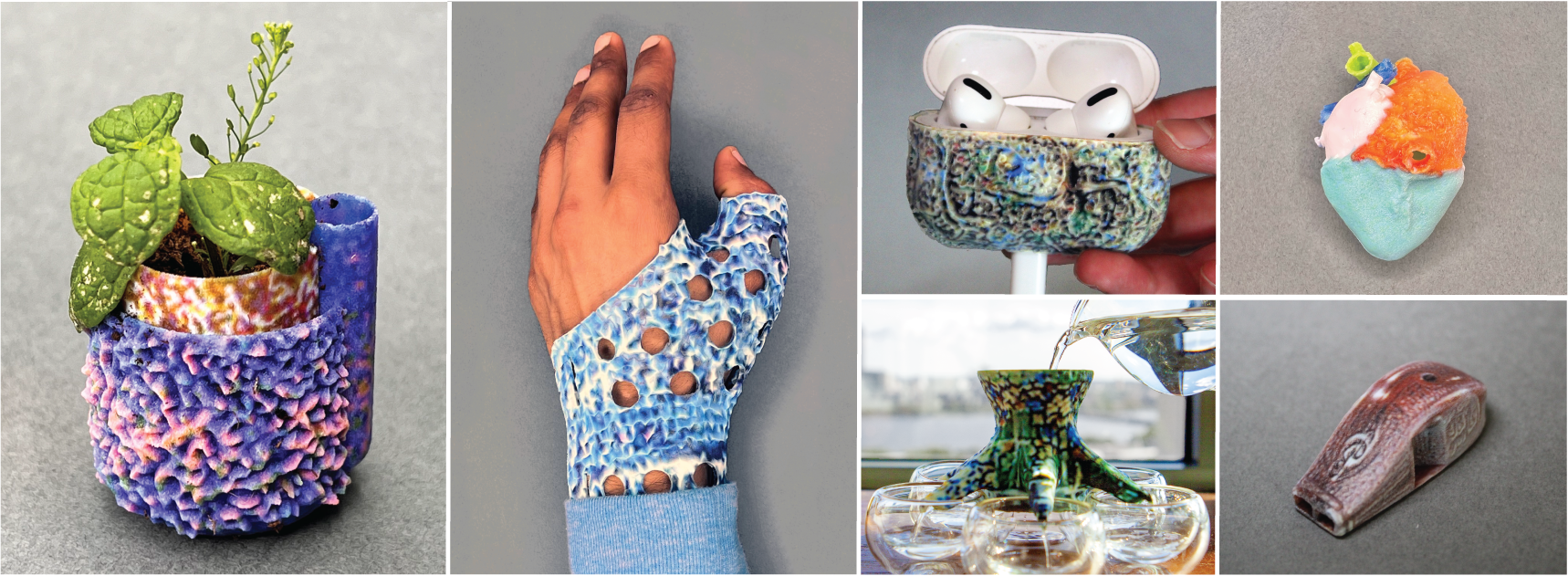What if your 3D printer could think more like an intelligent assistant, able to reason through a design idea, ask questions, and deliver something that works exactly the way the user envisioned it? That’s the kind of future Faraz Faruqi, a senior PhD student at MIT’s Computer Science and Artificial Intelligence Lab (CSAIL), is working toward. And for Faruqi, it’s not just about technical breakthroughs: it’s about making 3D printing personal, intuitive, and radically more inclusive.
“I want to make 3D printing more accessible, not just the machines, but the whole experience of designing,” Faruqi told 3DPrint.com in a recent interview. “A lot of people have access to printers now, but the software and skills required to create something functional? That’s where things get tough.”
That tension between access and actual usability is what drives Faruqi’s work. Coming from a computer science background, he initially focused on AI software applications. But after discovering the world of digital fabrication at MIT, he quickly became “captivated by the physicality of 3D printing.”
“I still remember my first 3D print,” he said. “It was just a block, but I was holding something I had programmed. That feeling stayed with me.”
The turning point came when Faruqi realized that, while he could code sophisticated software, it rarely translated into something tactile, something his family and friends could see or hold.
“My family members would ask me, ‘What do you actually make?’ and the answer was always code. But 3D printing changed that. I could now turn code into something real, something I could share.”
Since then, Faruqi has focused on using machine learning to develop tools that let non-experts design and customize functional objects. His projects include Style2Fab, a tool that lets users personalize complex 3D models (like a self-watering planter shown in the image below) without affecting how they work. The tool is simple to use: users upload an existing model, enter a style prompt, and let the system transform the design while preserving its geometric affordances.
“You can take an existing model from Thingiverse and adapt it to your style,” he explained. “Style2Fab segments the model and uses AI to highlight which parts can be personalized and which should stay fixed for the object to still work physically. You type a prompt, like ‘make it in Colorful Chinoiserie style,’ and it transforms the design, while keeping the functionality intact.”
These changes might seem like just design tweaks, but they open the door to a new kind of user-driven customization. In one example, Faruqi showed me how a user stylizes the multi-part self-watering planter, transforming its appearance without changing the critical water-holding base or the plant cup. The AI behind the scenes prevents changes that would compromise how the planter works.
But Faruqi isn’t stopping there. The next frontier in his research is making sure those AI-generated models are physically reliable and printable, like mugs with handles that don’t break, objects that flex where they should, and materials that behave as expected.
“We’re working on encoding physical properties into 3D models. So not just a cool shape, but something that holds up in the real world,” noted Faruqi. “This kind of functionality-aware design is still rare in today’s generative 3D modeling tools. While models created by AI systems can look impressive, they often fall apart—literally—when users try to print and use them. I want to close that gap.
“We’re asking questions like: can this mug handle the weight of a full cup of water? Will a hinge bend correctly? Can the object withstand the kind of forces it will face in everyday use? These are engineering challenges that may be tough for end-users to resolve, and we’re using AI to address them.”
This work fits nicely into the bigger mission of the Human-Computer Interaction (HCI) Engineering Group, led by MIT Professor Stefanie Mueller. Her vision is to make our physical world as easy to reprogram as our digital screens.
“Stefanie gave us this example: what if you could change the color or texture of your shirt as easily as changing your computer wallpaper?” Faruqi stated. “That’s the level of seamless, everyday interaction we’re aiming for.”
At CSAIL, collaboration is everywhere, from partnerships with Northeastern and Google to open-source contributions with researchers in New Zealand. Faruqi’s tools, like Style2Fab and others such as TactStyle, are built on open-source platforms like Blender and shared freely with the global maker community.
“I work with open-source models because others did the same and enabled my research. It’s this cycle of rapid innovation, build, share, iterate, and it’s what keeps the field moving forward,” he told me.
Faruqi also believes that sharing his work openly can benefit a wide range of people, from hobbyists and teachers to small business owners and even doctors with limited resources. The idea is simply to give people better tools, and they’ll come up with solutions you’d never expect.
“There’s so much happening in maker spaces and with platforms like Thingiverse, people building things, sharing them, remixing them. That energy is what makes this field so exciting.”
Sustainability is also an emerging focus. While Faruqi’s current work is grounded in usability and personalization, his lab is also asking important questions about eco-friendly design. For instance, how can AI help users design for recycled materials, or guide them toward geometry that reduces waste?
“In our lab, we’re exploring how to build support tools that work with recycled PLA or even with more sustainable materials that aren’t typically used in desktop printing,” he said. “That’s a really important next step, and some of my labmates are working in that direction.”
So what’s on his wishlist for the future of desktop 3D printers?
“I want printers that can reason. That understand prompts, ask you questions, and then generate objects that are useful — not just cool-looking. That’s the kind of intelligence that would truly transform 3D printing. Imagine a printer that could act like a design assistant, interpreting your goals, checking for structural integrity, adjusting for your materials, and finally handing you a printable file that just works.”
Faruqi’s vision brings us closer to that reality. But for now, he is staying focused on his PhD, pushing forward with projects that sit at the crossroads of AI and fabrication. But with tools like his already making waves—and more on the way—it’s clear he’s laying the groundwork for a smarter, more personal, and far easier-to-use future for digital manufacturing.
And at CSAIL, he’s not working alone. In fact, collaboration and sharing ideas across different fields are just part of how things work. In Faruqi’s world, code turns into real objects, design is something anyone can do, and the printer becomes a creative teammate. In the end, it’s not just about printing stuff, but about changing who gets to make it.





